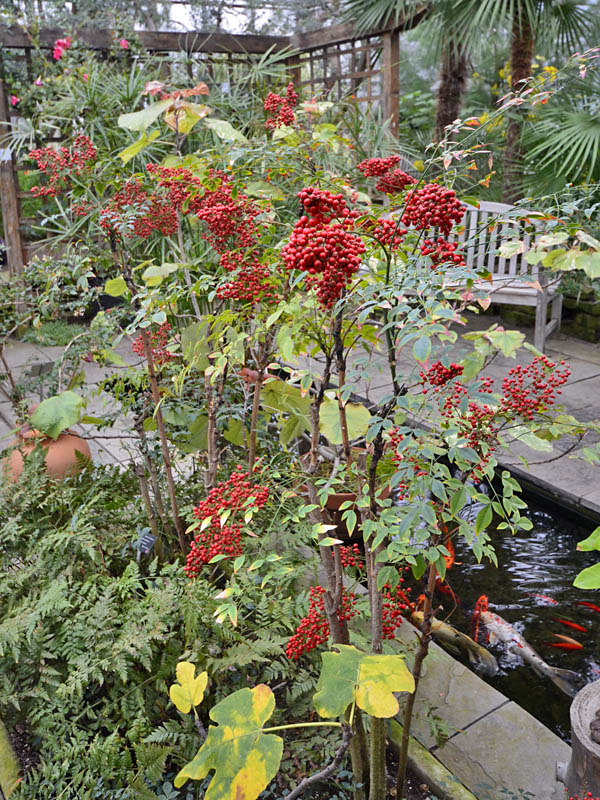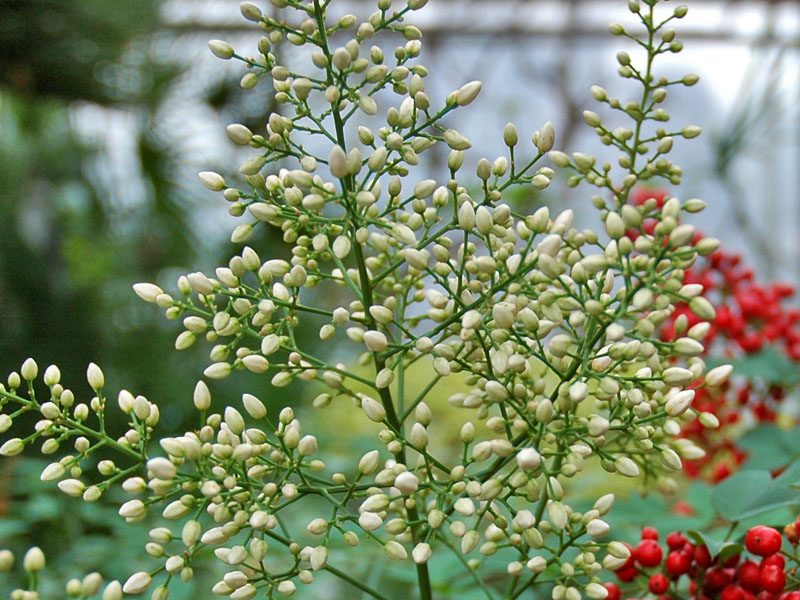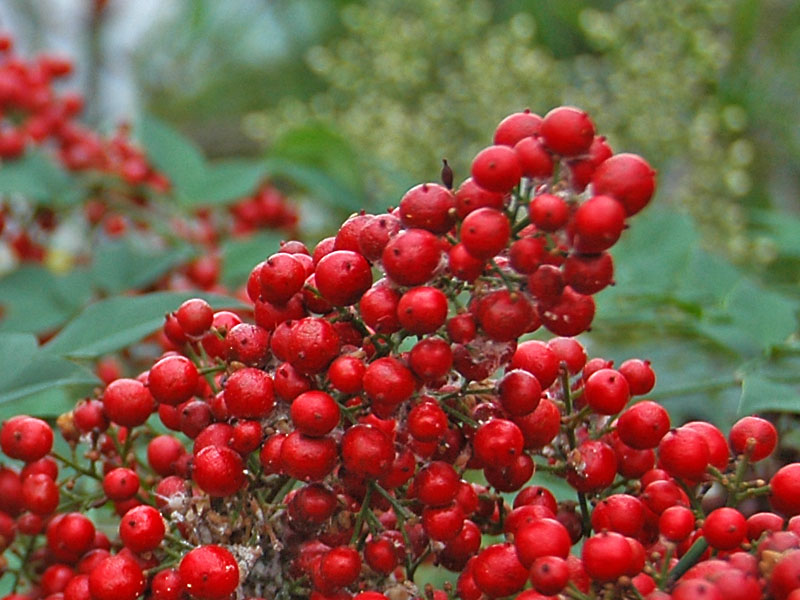
Woody > Nandina > Nandina domestica > Nandina domestica 'Richmond'
Nandina domestica
'Richmond'
Richmond Heavenly Bamboo
Mike's
Opinion


"
Nandina domestica ‘Richmond’ is considered an ornamental evergreen shrub and is versatile for landscape designs since it can be placed in large or small garden settings. Since Nandina domestica is poisonous, consideration should be given to its placement in public areas as it contains hydrocyanic acid and can be fatal if eaten.
Michael Pascoe, NDP., ODH., CLT., MSc. (Plant Conservation)
"
| Family |
| Berberidaceae |
| Genus |
| Nandina |
| Species |
| domestica |
| Cultivar |
| 'Richmond' |
| Category |
| Woody |
| Type |
| Shrub (evergreen) |
| Pronunciation |
| USDA Hardiness Zone |
| 7b - 8a |
| Canadian Hardiness Zone |
| 7 |
| RHS Hardiness Zone |
| H5 |
| Temperature (°C) |
| -23-(-3 ) |
| Temperature (°F) |
| -10-25 |
| Height |
| 2-3 m |
| Spread |
| 1.5 m |
Photographs
Description and Growing Information
Flowering Period
| General Description |
| Nandina domestica ‘Richmond’ is an evergreen shrub. It grows to 2 m in height and has bi-pinnately and tri-pinnately long compound leaves. |
| Landscape |
| It is a versatile shrub that can be placed in courtyard gardens, shrub borders, small garden spaces as well as large garden designs where it can be planted in mass. |
| Cultivation |
| Nandina domestica prefers neutral to acidic soils (with a pH range of 3.7 -6.4) and thrives in all types of soil whether dry or heavy clay and it can tolerate both sun and shade. |
| Shape |
| Nandina domestica ‘Richmond’ is a rounded, compact shrub. |
| Growth |
| Slow |
| ID Characteristic |
| Nandina domestica 'Richmond' may be recognized by its beautiful autumn foliage and red berries. The flowers are white while the buds are pink- purple. The leaves are green in the spring with a reddish tinge, turning more so towards winter. |
| Pests |
| None of note. |
| Habitat |
| Horticultural origin. |
| Bark/Stem Description |
| The bark is corrugated. |
| Flower/Leaf Bud Description |
| The bud is pink – purple and is 5 -15 mm in length. |
| Leaf Description |
| The leaves are alternate, 2 – 3 pinnately compound, narrow and from 3 – 5 cm in length. The leaves are tinged red in the spring, green in the summer and turn red in the winter. |
| Flower Description |
| The flowers are white with numerous sepals produced in three's, with equal numbers of petals and stamens. The flowers form attractive panicles approximately 30 cm long during mid-summer. |
| Fruit Description |
| The fruit is red, two seeded, 12 mm in length, appearing in the autumn and is quite attractive producing a full show. |
| Colour Description |
| The leaves are green with a red tinge in the spring, remaining green throughout the summer and returning to red in the winter. The buds are a pinkish purple in colour. The flowers are white and the fruit is produced in the autumn is red. |
| Texture Description |
| Nandina domestica ‘Richmond’ has fine textured foliage. |
| Notable Specimens |
| Royal Botanic Gardens, Burlington, Ontario, Canada. |
| Propagation |
| Propagation is normally by hardwood cuttings or tissue culture. The cuttings should be taken when the wood is still flexible, but showing signs of hardening; the leaves should be removed from the bottom. By wounding the cutting and exposing cambium you will encourage the roots to grow. (A rooting hormone or compound can be added to the cutting). Rooting will take approximately one to one and a half months. You can test the plant to see if the roots are well established by lightly pulling on the plant’s stem, if there is resistance rooting has occured. The cutting may then be planted in its chosen spot in the garden in autumn. Suckers from the clump or parent plant can be divided and used as well. |
References
Beckett, Kenneth A., “The Complete Book of Evergreens”.Van Nostrand Reinhold Company. 1981.57
Church, Glyn. “The Woody Plant”, Trees and Shrubs for Foliage, Firefly Books. 2002. 95.




